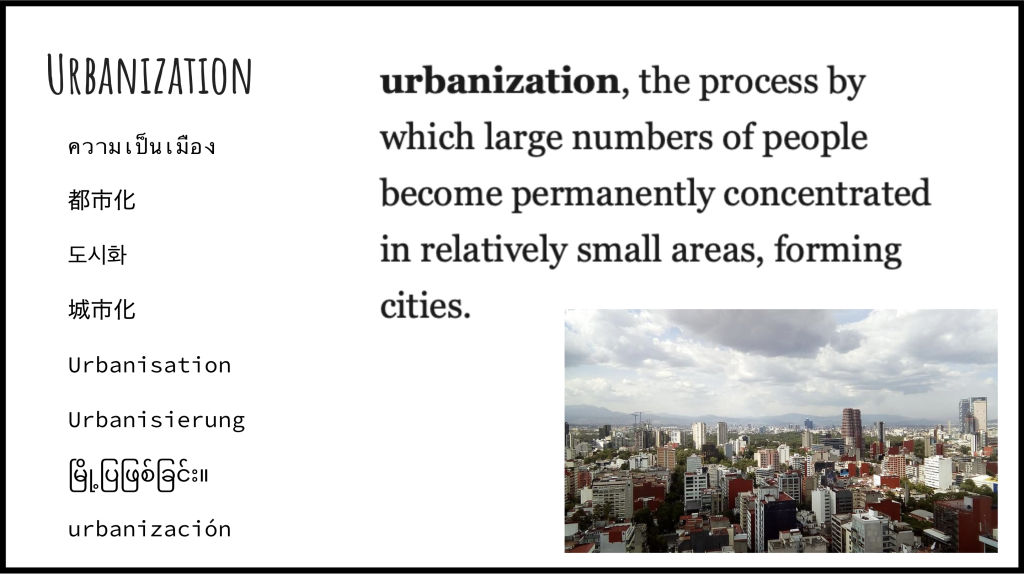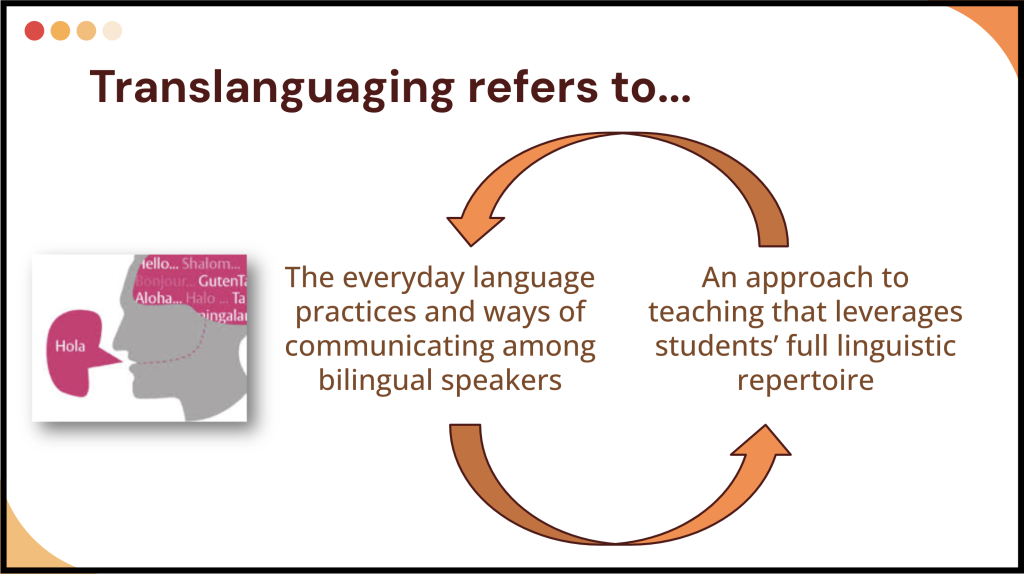Today is the International Day of Multilingualism, chosen because 27th March 196 BC is the date on the famously multilingual Rosetta Stone. Here is information about a key topic in multilingualism at ISB: translanguaging.
In a recent Grade 6 Social Studies class, ISB teachers introduced a new concept—urbanization—with a slide that displayed it in several of the students’ home languages.
The purpose was partly to provide vocabulary that was new to most of the students in any language. Another purpose was to activate prior knowledge, because while urbanization itself was new, students knew some of its parts: in English, urban and –iz(s)ation. In Chinese and Japanese, city (城市, 都市) and becoming (化). Drawing on students’ full linguistic repertoires gave them many ways to approach the concept.
Affirming and tapping all of students’ languages for their learning is called translanguaging; it is a pedagogical concept that ISB’s faculty and community have been exploring for several years. It is also a term for the fluid ways in which multilingual people use language.
Dr. Kate Seltzer, author of The Translanguaging Classroom, has been providing remote sessions for ISB faculty in 2023-24. In one session, she explains, “Translanguaging . . . refers to both the everyday way of communicating among bi-/multilingual speakers AND to an approach to teaching that is aligned with this norm and aims to leverage students’ full linguistic repertoire for their learning.”
Drawing on students’ full linguistic repertoire in class is a contrast to the former status quo in international schools, where English-only was the norm. This had the unfortunate effect of lowering the status of Languages Other Than English, placing them at risk of atrophy. But as research has progressed, it has become clear that mother tongue strength fuels academic success, including English acquisition—even in reading (a concern for many)—and that translanguaging supports linguistic and cognitive development.
Dr. Eowyn Crisfield has a video that demonstrates her own change in thinking about this topic, as well as a journal article.
Is translanguaging only for English learners? No! Virtually all students at ISB are multilingual, in the sense that they study or use more than one language. Translanguaging across disciplines gets them exercising all of their languages, while enhancing their content learning and expressing their identity. Translanguaging is for everyone.
In another unit of Grade 6 Social Studies, all students used their laptops to watch a ten-minute video on the history of the Internet—first in English, and then in another language of their choice. For some students, this language was their home language; for others, it was a new language they were studying in World Language class. Some students found the video easier to follow in English; others found it easier to absorb in the Language Other Than English. Either way, after both views, most students had acquired new words or phrases, and all were ready to discuss the content.
That was what their teachers found exciting to watch!
For ISB parents, Dr. Laura Ascenzi-Moreno and Dr. Cecilia M. Espinosa have presented a one-hour session that is viewable online, asking, “What is translanguaging and why is it important for my family?”
What questions do you have about translanguaging? How do you notice that #multilingualisnormal at ISB?



